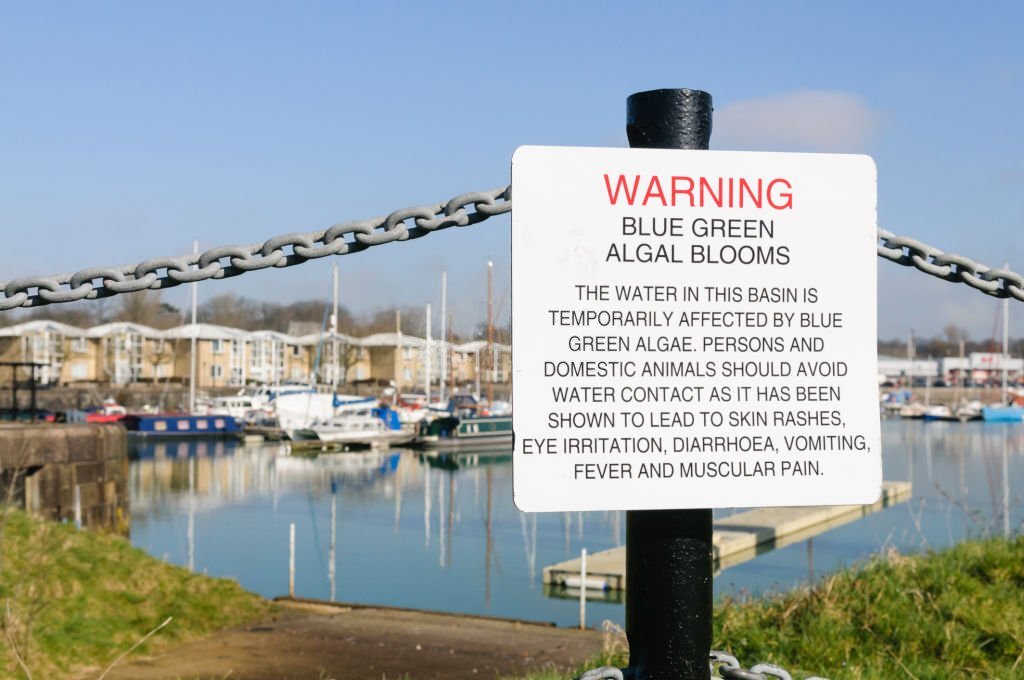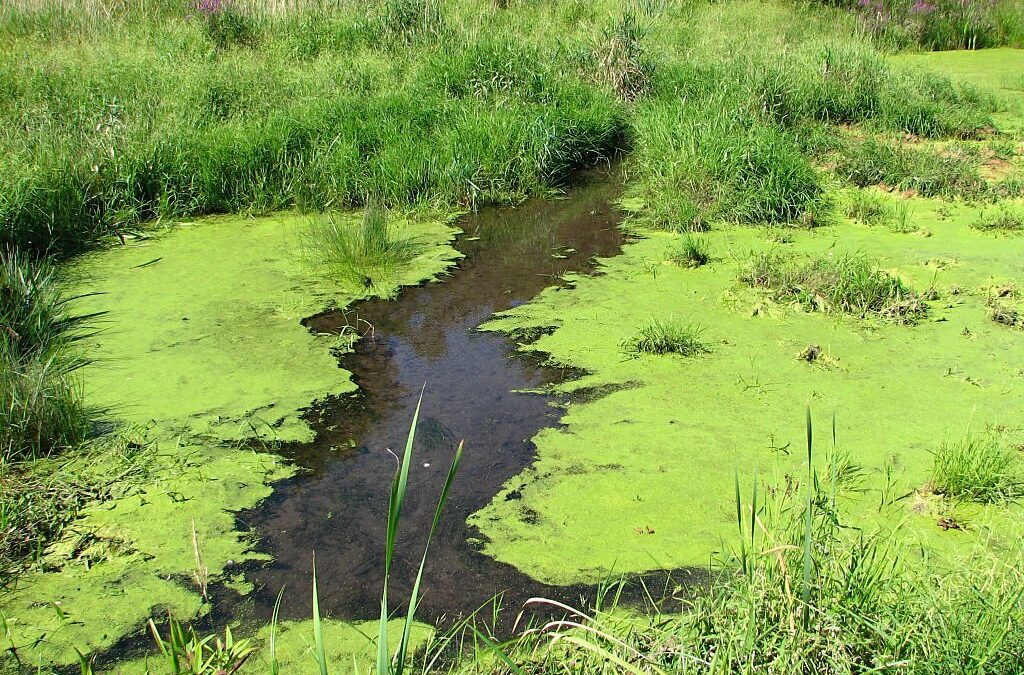Toxicity from Blue-Green algae is more common in the warmer months, particularly towards the end of summer. Commonly found in fresh water pools, lakes, ponds and even bird baths it can appear anywhere water is stagnant. Although it is termed algae because of the appearance is causes on the surface of the water, Blue-green Algae is actually a bacteria called, Cyanobacteria. In the warmer months the bacteria will grow abundantly creating a “bloom” and is more common in nutrient rich waters, particularly those full of nutrients including duck poo. There are more than 2000 species of Cyanobacteria but only 80 of them are toxic.

All mammals including humans are susceptible to the toxin.More common in summer and autumn, especially in temperate climates, especially at times of lesser rainfall and reduced water flow. Signs will often occur within 20-30 minutes of the dog drinking the contaminated water.
The toxins can affect the liver, skin, brain and nervous system, and the signs will depend on which toxins are involved.
Symptoms can include
- Weakness, lethargy
- Lack of appetite
- Changes in breathing/respiration
- Salivation, nausea and vomiting
- Bleeding
- Shock
- Pale or blue tinged gums and skin with paralysis of the muscles of respiration including the diaphragm resulting in respiratory failure
- Diarrhoea, sometimes with black tar-like faeces due to bleeding into the intestines as the liver stops producing clotting factors
- Muscle tremors, lack of co-ordination, seizures, paralysis often within 30 mins of exposure
- Disorientation
- Jaundice and liver failure within hours
- Coma and death within 12-24 hours.

Death is usually the result of liver failure caused by the toxins produced by the algae. There is no antidote and survival relies upon your vet providing supportive therapy, including IV fluids to flush the toxins from the body and managing other signs and symptoms, especially seizures and supporting breathing.
Not all algae is toxic, however it can be near impossible to tell the difference between Blue-green Algae and non-toxic forms, so prevention is better than the cure,just avoid lakes and dams etc with an algal bloom.Immediate treatment would involve getting the algae out of the body by inducing vomiting, flushing the stomach under anaesthesia (“pumping the stomach”) and giving activated charcoal. Aggressive therapy with IV fluids, monitoring and supplementing blood sugar levels, supporting organ function and preventing shock. Muscle relaxants will help those animals with tremors and anti-seizure medications if seizures occur.Despite treatment the outcome is often poor with many dogs passing away before reaching the vet,with symptoms coming on so quickly due to some toxins that livestock are found deceased beside the contaminated water.
If you have any concerns or further questions about your pet, please book in for a consultation either online or by calling our awesome reception team on 9369-1922

